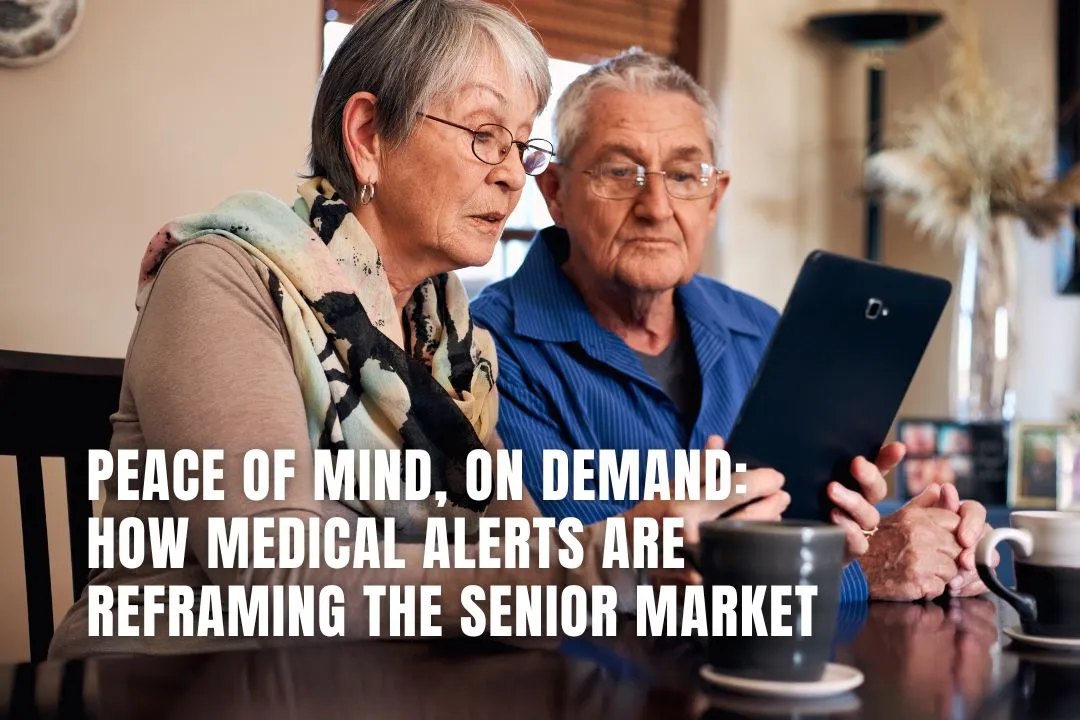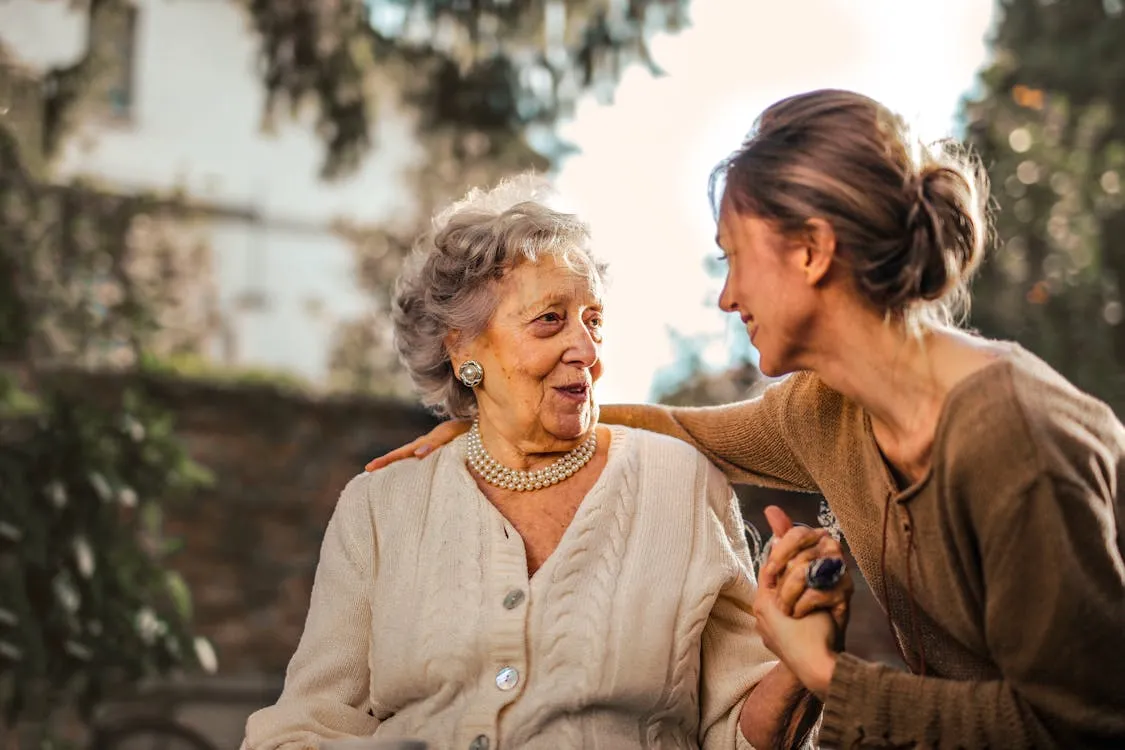
Editorial Disclaimer
This content is published for general information and editorial purposes only. It does not constitute financial, investment, or legal advice, nor should it be relied upon as such. Any mention of companies, platforms, or services does not imply endorsement or recommendation. We are not affiliated with, nor do we accept responsibility for, any third-party entities referenced. Financial markets and company circumstances can change rapidly. Readers should perform their own independent research and seek professional advice before making any financial or investment decisions.
For a long time, medical alert systems were seen as emergency-only devices. You’d picture them hanging from the neck of an older adult living alone, pressed only when something had already gone wrong. But that picture is changing, and fast. Medical alert devices are no longer just about responding to a fall. They’re about creating independence, confidence, and everyday peace of mind for aging adults and their families.
And while that shift might seem subtle, businesses are catching on. From product design to marketing, the senior care industry is moving from crisis prevention to lifestyle support. Brands like Life Assure are part of this transformation, quietly but powerfully helping reshape the conversation around aging.
Let’s start with the numbers. By 2030, 1 in 6 people worldwide will be over 60. In the U.S. and much of Europe, seniors already make up a huge portion of the population, and they’re living longer, healthier lives than previous generations.
That longevity is fuelling a new kind of consumer behaviour. Today’s older adults want tools that fit their lives, not just their limitations. That’s where the opportunity lies. Businesses that position medical alerts as lifestyle tools, not just panic buttons, are building better products, stronger brands, and longer-lasting customer relationships.
Here’s what’s changing:
Modern medical alerts include fall detection, GPS tracking, and even mobile apps that let family members check in. The goal isn’t just to respond after something happens, it’s to help seniors live confidently, knowing help is close if needed.
This simple reframing opens the door to a whole new way of talking to customers. It’s no longer about “being old and fragile.” It’s about staying independent, even with a few more birthday candles.
Let’s be real: nobody wants to buy a product that makes them feel old or helpless. That’s why businesses in the senior tech space are now investing in brand language that speaks to strength, not weakness.
Medical alerts are becoming more:
Take the rise of wearables. Seniors who wear smartwatches are more open to similar-looking medical alerts because they feel tech-savvy, not dependent.
By moving away from fear-based messaging, companies are building emotional loyalty. They’re not selling alarms; they’re selling peace of mind, pride, and personal agency.
So, what exactly are the forward-thinking brands doing that others aren’t?
The best medical alert systems are being treated like lifestyle tech. That means devices that are waterproof for shower use, have longer battery life, and feel comfortable to wear for 16 hours a day.
Just like a good pair of glasses or a phone case, these products become part of daily life, not just something for “what if” moments.
Businesses are recognising that peace of mind isn’t just for the user, it’s for their loved ones too.
That’s why companion apps and caregiver portals are gaining traction. These features allow adult children to:
It turns a solo product into a family-centred solution, and that increases the perceived value tenfold.
Marketers are trading clinical language for real-life stories. Instead of “reduce risk of hip fracture,” you’ll hear phrases like “go on your morning walk with confidence.”
This emotional connection speaks volumes, especially in a space that’s often avoided until it’s urgently needed. Forward-looking brands are building trust long before a crisis hits.
While many think of medical alerts as a direct-to-consumer product, the B2B angle is quietly thriving. Here’s how businesses are integrating these tools into larger strategies:
For entrepreneurs and decision-makers, there’s room to think beyond the device. Think ecosystem, partnership, and integration. A good alert system becomes a value-added service in industries ranging from telehealth to real estate (yes, even age-in-place property planning).
Let’s not lose sight of the real motivator: people want to feel safe without feeling small. That’s where dignity-driven branding wins.
Instead of pushing alerts like they’re a reminder of frailty, smart companies position them as a badge of freedom. A tool to keep living fully, not a leash.
This isn’t just good ethics. It’s good economics. When a product makes someone feel good about themselves, they don’t just buy it, they recommend it, renew it, and keep using it. That’s lifetime customer value in action.
One thing medical alert companies have quietly mastered is the subscription model. It’s simple: most devices operate on a monthly service fee. But here’s what makes it stick:
The model works because it delivers reassurance over and over, not just one-time utility. Any business that wants to build a reliable recurring revenue stream can take notes.
Even if you're not in the senior care space, there are big takeaways from how companies like Life Assure are shifting their messaging and model. Here’s what stands out:
Whether you’re building a SaaS platform, a wellness product, or a coaching program, the emotional landscape of your customer matters. And no one understands that better than companies in the business of caregiving.
As technology evolves, we’re going to see medical alert devices get smarter, smaller, and even more integrated into everyday life. Expect developments like:
For businesses, the lesson is simple: the senior market isn’t a “niche.” It’s a future-facing growth opportunity. And the companies that treat seniors not as patients, but as people with aspirations, routines, and pride, those are the ones that will lead.

At first glance, medical alerts are just buttons. But behind those buttons are stories, families, routines, and the desire to live life without second-guessing every step. That’s why the smart shift from emergency-only messaging to daily empowerment is such a game changer.
It’s a business model that works, a brand story that resonates, and most importantly, a product that actually matters.
As more companies follow this lead, the result will be a senior market that’s not just growing in size, but growing in confidence, dignity, and demand.
Today’s alerts prioritise daily independence and connectivity, not just emergency response, offering features like fall prediction, GPS tracking and companion apps.
They allow family members to monitor device status, activity levels and receive real-time notifications, turning a single device into a family-centred safety net.
Monthly fees create recurring value and emotional reliance, resulting in low churn rates and sustained engagement from both users and their families.
Yes, sleek, waterproof designs with extended battery life ensure they look and feel like lifestyle tech, not medical gadgets.
Look for AI-based fall prediction, voice-activated support, biometric monitoring and seamless integration with smart-home systems.
For a long time, medical alert systems were seen as emergency-only devices. You’d picture them hanging from the neck of an older adult living alone, pressed only when something had already gone wrong. But that picture is changing, and fast. Medical alert devices are no longer just about responding to a fall. They’re about creating independence, confidence, and everyday peace of mind for aging adults and their families.
And while that shift might seem subtle, businesses are catching on. From product design to marketing, the senior care industry is moving from crisis prevention to lifestyle support. Brands like Life Assure are part of this transformation, quietly but powerfully helping reshape the conversation around aging.